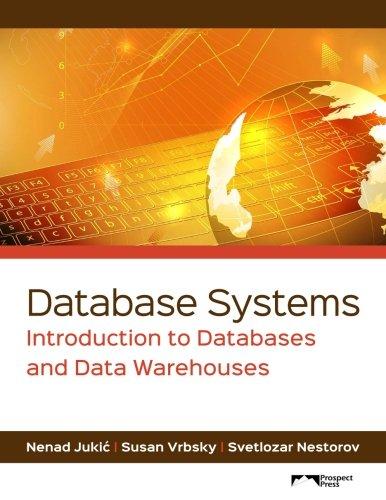Answered step by step
Verified Expert Solution
Question
1 Approved Answer
n acumulator architecre MUL C> TC: 5 mstachons nstechan clock e on q stack qrchitecture Tos stock confents, vied sa ADD 418- C A+ MuL



 n acumulator architecre MUL C> TC: 5 mstachons nstechan clock e on q stack qrchitecture Tos stock confents, vied sa ADD 418- C A+ MuL ADD his RTL doesn dcn be the whele shato becase it aesnshow he stack being TC:&nstnchons CPU Time: 8lao ns 960 ns Two-qddiess load-store achdedure LOAD RI, C ; Regs C TCnstichons CPU Time 8x IYO nS 1120 nS ( 1,12045 Three ddes memory-memory qchtcdue dMem (b) The percentage efficiency of the code. This is the percentage of code bits that are "useful", that is, not just zero-filled to make all instructions a fixed length. program memory more efficiently.] [Note which architectures use (c) The number of bytes of data transferred between the data memory and the processor when (d) The total number of bytes (both data and program) transferred to/from memory [This is a running the code. [Note which architectures require fewer data transfers.] very important metric for self-powered applications, since accessing memory is one of the most power-hungry things a processor does. Note which architectures will consume less power consumption due to memory transfers.] n acumulator architecre MUL C> TC: 5 mstachons nstechan clock e on q stack qrchitecture Tos stock confents, vied sa ADD 418- C A+ MuL ADD his RTL doesn dcn be the whele shato becase it aesnshow he stack being TC:&nstnchons CPU Time: 8lao ns 960 ns Two-qddiess load-store achdedure LOAD RI, C ; Regs C TCnstichons CPU Time 8x IYO nS 1120 nS ( 1,12045 Three ddes memory-memory qchtcdue dMem (b) The percentage efficiency of the code. This is the percentage of code bits that are "useful", that is, not just zero-filled to make all instructions a fixed length. program memory more efficiently.] [Note which architectures use (c) The number of bytes of data transferred between the data memory and the processor when (d) The total number of bytes (both data and program) transferred to/from memory [This is a running the code. [Note which architectures require fewer data transfers.] very important metric for self-powered applications, since accessing memory is one of the most power-hungry things a processor does. Note which architectures will consume less power consumption due to memory transfers.]
n acumulator architecre MUL C> TC: 5 mstachons nstechan clock e on q stack qrchitecture Tos stock confents, vied sa ADD 418- C A+ MuL ADD his RTL doesn dcn be the whele shato becase it aesnshow he stack being TC:&nstnchons CPU Time: 8lao ns 960 ns Two-qddiess load-store achdedure LOAD RI, C ; Regs C TCnstichons CPU Time 8x IYO nS 1120 nS ( 1,12045 Three ddes memory-memory qchtcdue dMem (b) The percentage efficiency of the code. This is the percentage of code bits that are "useful", that is, not just zero-filled to make all instructions a fixed length. program memory more efficiently.] [Note which architectures use (c) The number of bytes of data transferred between the data memory and the processor when (d) The total number of bytes (both data and program) transferred to/from memory [This is a running the code. [Note which architectures require fewer data transfers.] very important metric for self-powered applications, since accessing memory is one of the most power-hungry things a processor does. Note which architectures will consume less power consumption due to memory transfers.] n acumulator architecre MUL C> TC: 5 mstachons nstechan clock e on q stack qrchitecture Tos stock confents, vied sa ADD 418- C A+ MuL ADD his RTL doesn dcn be the whele shato becase it aesnshow he stack being TC:&nstnchons CPU Time: 8lao ns 960 ns Two-qddiess load-store achdedure LOAD RI, C ; Regs C TCnstichons CPU Time 8x IYO nS 1120 nS ( 1,12045 Three ddes memory-memory qchtcdue dMem (b) The percentage efficiency of the code. This is the percentage of code bits that are "useful", that is, not just zero-filled to make all instructions a fixed length. program memory more efficiently.] [Note which architectures use (c) The number of bytes of data transferred between the data memory and the processor when (d) The total number of bytes (both data and program) transferred to/from memory [This is a running the code. [Note which architectures require fewer data transfers.] very important metric for self-powered applications, since accessing memory is one of the most power-hungry things a processor does. Note which architectures will consume less power consumption due to memory transfers.]




Step by Step Solution
There are 3 Steps involved in it
Step: 1

Get Instant Access to Expert-Tailored Solutions
See step-by-step solutions with expert insights and AI powered tools for academic success
Step: 2

Step: 3

Ace Your Homework with AI
Get the answers you need in no time with our AI-driven, step-by-step assistance
Get Started


